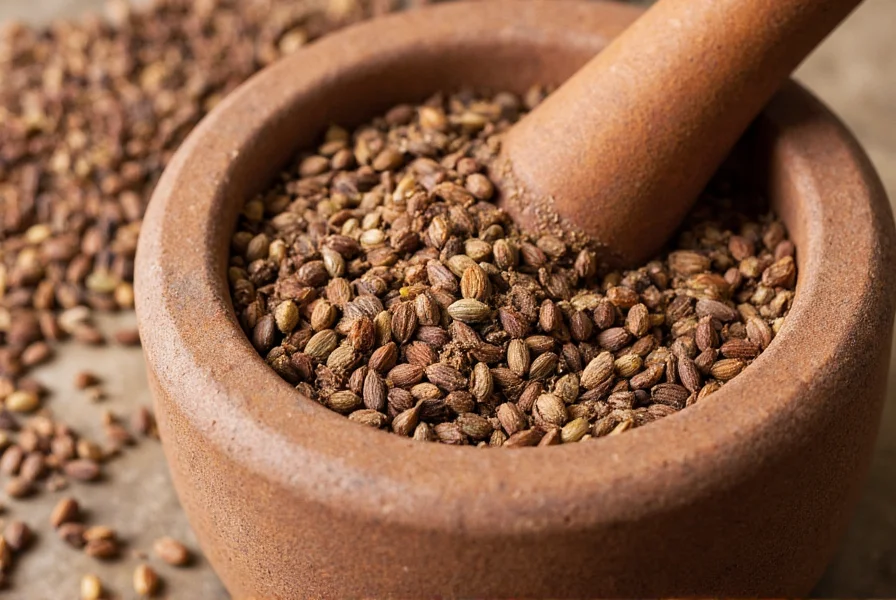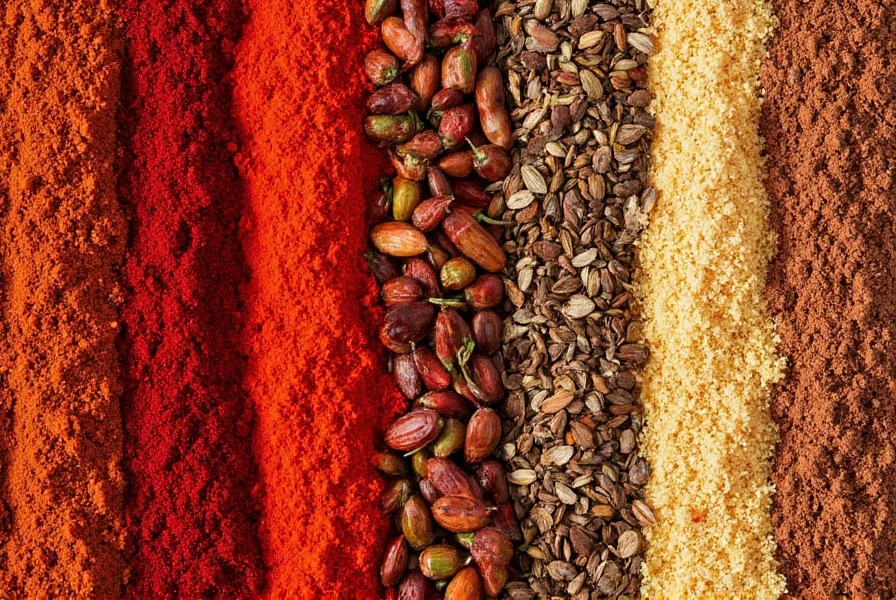Creating exceptional chili depends on understanding how spices interact with meat, beans, and tomatoes. After decades of testing hundreds of chili recipes across regional variations, I've identified the precise spice combinations that transform ordinary chili into extraordinary comfort food. The magic happens when you balance foundational spices with supporting notes that complement rather than overwhelm.
Essential Spices for Perfect Chili Flavor
While chili recipes vary by region and preference, certain spices consistently deliver the most balanced, complex results. Understanding each spice's role helps you customize your chili while maintaining authentic flavor profiles.
Cumin: The Earthy Foundation
Cumin is non-negotiable in traditional chili recipes. This earthy, slightly citrusy spice provides the deep base note that defines chili's characteristic flavor. For best results, use 1-2 tablespoons of freshly ground cumin per 2 pounds of meat. Toasting whole cumin seeds before grinding releases essential oils that bottled powder lacks. The ideal spice blend for chili con carne always features cumin as the dominant earthy note.

Chili Powder: The Flavor Anchor
Quality chili powder makes or breaks your dish. Not all blends are equal—seek out New Mexico or Ancho-based powders without excessive salt or fillers. Use 2-3 tablespoons per batch as your flavor foundation. When searching for the best chili powder for homemade chili, look for blends containing ancho, pasilla, and guajillo peppers. Commercial blends often include cumin and garlic, so adjust other spices accordingly.
Smoked Paprika: The Secret Weapon
Smoked paprika adds dimension that regular paprika can't match. Just 1-2 teaspoons provides subtle smokiness without liquid smoke's artificial taste. This ingredient bridges the gap between Texas-style meat chili and Cincinnati-style with its warm, campfire-like notes. For spices that enhance chili flavor without overwhelming heat, smoked paprika delivers unmatched complexity.
| Spice | Primary Flavor Contribution | Recommended Amount (per 2 lbs meat) | When to Add |
|---|---|---|---|
| Cumin | Earthy, warm, slightly citrusy | 1-2 tbsp | With onions and garlic |
| Chili Powder | Peppery, slightly sweet base flavor | 2-3 tbsp | With cumin |
| Smoked Paprika | Subtle smokiness, depth | 1-2 tsp | With tomatoes |
| Garlic Powder | Pungent, savory backbone | 1-2 tsp | With cumin |
| Dried Oregano | Floral, slightly bitter balance | 1 tsp | With tomatoes |
Supporting Spices for Customization
Garlic and Onion Powder: The Flavor Enhancers
Fresh garlic burns easily in long-simmered chili. Garlic powder provides consistent flavor without bitter notes. Use 1-2 teaspoons per batch—more creates harshness. Onion powder (1 tsp) complements without overwhelming. These form the aromatic foundation that helps distribute other flavors evenly throughout the best spices for traditional beef chili.
Dried Oregano: The Balancing Note
Mexican oregano (not Italian) provides the slightly floral, earthy note that cuts chili's richness. One teaspoon added with tomatoes prevents bitterness from developing during long simmers. This is particularly crucial for authentic chili spice combinations that maintain complexity without heat dominance.
Cayenne and Black Pepper: Heat Control
For adjustable heat, cayenne pepper (¼-½ tsp) offers cleaner heat than red pepper flakes. Black pepper (1 tsp freshly cracked) adds subtle warmth that complements rather than competes. When making mild spices for kid-friendly chili, reduce cayenne while maintaining black pepper for depth. Remember that heat perception increases as chili sits, so under-season slightly and adjust before serving.
Avoiding Common Spice Mistakes
Even with the best spices for chili, improper technique ruins results. Never add all spices at once—layer them based on solubility and burn point. Blooming dry spices in oil with onions (not at the end) maximizes flavor extraction. Over-toasting creates bitterness; under-toasting leaves spices raw-tasting. Acidic ingredients like tomatoes can mute spices, so adjust seasoning after adding tomatoes and again before serving.
Regional variations require different approaches. Texas chili needs minimal spices beyond chilies and cumin, while Cincinnati chili benefits from cocoa powder and cinnamon. For top spices for vegetarian chili, increase smoked paprika and add a pinch of instant coffee to compensate for lack of meat depth.

Practical Spice Application Guide
Follow this sequence for optimal flavor development:
- Sauté onions in oil until translucent
- Add cumin, chili powder, garlic powder—cook 1 minute until fragrant
- Add meat and brown thoroughly
- After deglazing, add tomatoes with smoked paprika and oregano
- Simmer 30 minutes before final seasoning adjustments
- Add cayenne and additional salt just before serving
This method ensures proper when to add spices to chili for maximum flavor extraction without burning. For meal prep, store spice blends in airtight containers away from light—whole spices stay fresh 6-12 months, ground spices 3-6 months. Never use spices past their prime; stale spices create flat, one-dimensional chili regardless of other ingredients.
Frequently Asked Questions
How much cumin should I use in chili for optimal flavor?
Use 1-2 tablespoons of freshly ground cumin per 2 pounds of meat. Start with 1 tablespoon, then adjust during simmering. Cumin's earthy flavor intensifies as chili cooks, so under-season initially. For milder cumin presence in mild spices for kid-friendly chili, use 2 teaspoons and pair with extra smoked paprika for depth without heat.
Can I substitute fresh spices for dried in chili recipes?
Fresh spices behave differently than dried. Use three times the amount of fresh herbs (like oregano) compared to dried. Fresh garlic works but burns easily—add near the end. Fresh chilies provide different heat profiles than dried powders. For consistent results in authentic chili spice combinations, dried spices are preferable as they've been concentrated through dehydration, delivering more intense flavor per volume.
What's the difference between chili powder and cayenne pepper in chili?
Chili powder is a blend (typically ancho, pasilla, and other chilies plus cumin/garlic) providing complex base flavor, while cayenne delivers pure, direct heat. Use 2-3 tablespoons chili powder as your foundation, then adjust heat with cayenne (¼-½ tsp). This approach gives you control over the best spices for traditional beef chili without overwhelming other flavors. Remember that cayenne's heat intensifies during cooking, so add gradually.
How can I fix chili that's too spicy?
Add acidity (1-2 tbsp lime juice or vinegar) and sweetness (1 tbsp honey or brown sugar) to balance heat. Dairy (sour cream or shredded cheese) helps when serving. For future batches of ideal spice blend for chili con carne, reduce cayenne and increase smoked paprika for depth without heat. Remember that heat perception increases as chili sits, so under-season initially and adjust before serving.











 浙公网安备
33010002000092号
浙公网安备
33010002000092号 浙B2-20120091-4
浙B2-20120091-4